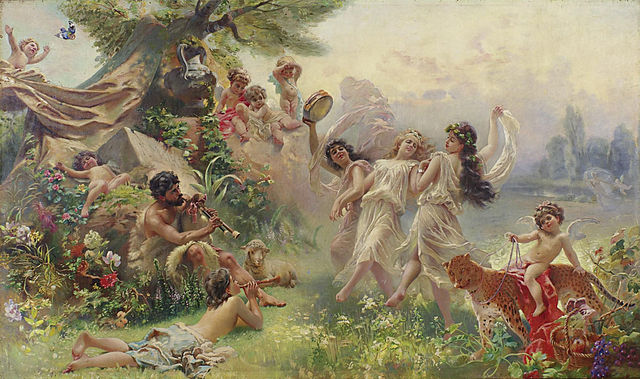What happens when you cross the Ghibli Hills with the Call to Agriculture? You get Arcadia, a simple, uncomplicated utopia where people keep to the good old ways and live in harmony with nature. As home sweet home for the farm boy and the country mouse, it’s often the starting point for the hero’s journey, though you’ll also see an occasional retired badass or old master take up residence after their adventuring days are over. Then again, it might just be a ten minute retirement before they’re back in harm’s way.
This is NOT a town with a dark secret or any other kind of twisted dystopia. There are no knights templar who believe that Arcadia justifies the means. If there is any sort of moral or message behind this place, it’s a green Aesop. If there’s anyone who fights to defend this place, it’s usually the good shepherd.
Because of the Rule of Drama, it seems almost paradoxical that a place as peaceful as Arcadia would exist in any story. However, sometimes it’s good to have the contrast. It also helps to raise the stakes by giving the hero a home like this to fight for. By keeping this in the back of their minds, it can be an effective way to keep them from crossing the despair event horizon.
The hero can visit Arcadia at any point in the story, but it tends to fulfill different roles depending on when they go there.
If the hero starts out in Arcadia, it’s usually the known, familiar world which he leaves behind after getting the call to adventure. He may or may not be able to go back once the adventure is over, depending on how much he’s changed and whether he can adjust to a boring, peaceful life after so much adventure. A good example of this is The Shire from The Hobbit and Lord of the Rings.
If the hero ends in Arcadia, then it’s usually a way to show that everyone lived happily ever after (more or less). Tolstoy was a big fan of this one, though he was also sure to show that living in Arcadia can be hard work–but in his view, the work is part of the reward. In Lord of the Rings, Samwise Gamgee ended in Arcadia on this note. Frodo didn’t.
If the hero visits Arcadia during the middle of the story, it’s usually part of an Arcadian Interlude. The down time may give him a chance to rest and recuperate, as with Medwyn’s realm in The Chronicles of Prydain, Resembool in Full Metal Alchemist, or Tom Bombadil in Lord of the Rings. Alternately, it may be a leave your quest test–because really, who wouldn’t want a nice, peaceful life when faced with the hardships of adventure?
While the idyllic rural setting of Arcadia seems great to us now, this wasn’t always the case. In all the old stories, when characters strayed into the country, they tended to find themselves in the Lost Woods. And while Vice City is normally considered the exact opposite of Arcadia, the Shadowland, which may or may not be rural, also qualifies.
In the end, the thing that makes Arcadia great isn’t just the rural, agricultural setting, or the simple way of life, or the lack of poverty (or extravagant wealth, for that matter), it’s the combination of all three, combined with a sense that the place is truly incorruptible. It may be full of simple-minded, naive little people who have no idea what’s going on in the rest of the world, but it’s a place where you can feel safe.
In my own work, Terra 4 Dome from Desert Stars probably qualifies as this. Even though it’s an archipelago of small islands rather than the rolling farmlands most often associated with Arcadia, it fulfills the same role more or less. I don’t think I played with this trope at all in Bringing Stella Home, though in Stars of Blood and Glory, there are a couple of places that qualify. And in Star Wanderers, various examples pop up from time to time, some more relevant than others.
As someone who dreams of settling down in a real-life version of Arcadia at some point, you can definitely expect to see me play with this trope in the future.
